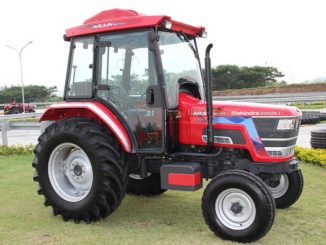The number of initial quality problems reported by two-wheeler owners in India has declined by a significant 14 problems per 100 vehicles (-14 PP100), driven primarily by a reduction in engine-related problems, according to the J.D. Power 2016 India Two-Wheeler Initial Quality (2WIQS) StudySM released today.
The study measures problems owners experience with their new two-wheeler during the first two to six months of ownership. It examines 138 problem symptoms covering seven categories (listed in order of frequency of reported problems): engine; brakes; fit and finish; lights/ electricals; ride and handling; transmission; and gauges and controls. All problems are summarized as the number of problems per 100 vehicles (PP100). Lower PP100 scores indicate a lower rate of problem incidence and therefore higher initial quality.
“Given the high incidence of pillion riding in India, core vehicle systems such as engine and brakes undergo a lot of stress. Therefore, it is imperative for OEMs to focus on these key systems to help enhance owners’ perceptions of vehicle quality,” said Mohit Arora, executive director at J.D. Power, Singapore. “With increasing competition and the frequent launch of new models, sustained quality under such adverse usage conditions can be a key differentiator.”
The study finds that the number of initial quality problems is influenced by the incidence of pillion riding. This is reflected in the finding that the 54% of two-wheeler owners who normally ride with a pillion report 156 PP100, compared with 145 PP100 reported by the owners who normally ride solo. The increase in reported problems is particularly notable in the engine, brakes and ride and handling categories.
“One-third of the two-wheeler owners ride more than 40 kilometers every day. Given this high usage, coupled with the driving conditions in India, it would be prudent for OEMs to focus on ensuring a trouble free vehicle,” said Kaustav Roy, director at J.D. Power, Singapore. “Providing customers with a high quality and dependable vehicle can improve satisfaction and the likelihood to build a strong brand reputation.”
Following are some of the key findings of this year’s study.
- Initial Quality Improves in Both Scooter and Motorcycle Segments: Overall initial quality averages 137 PP100 for Scooters and 159 PP100 for Motorcycles, an improvement of 13 PP100 and 14 PP100, respectively, from 2015. Among vehicle systems, the greatest year-over-year improvement is in the engine category.
- First-Time Buyers Report Fewer Initial Quality Problems: More than three-fourths (77%) of two-wheeler owners are first-time buyers, and they report fewer problems than those with previous ownership experience (138 PP100 vs. 200 PP100, respectively). The difference is largely influenced by problems in the engine and ride and handling categories.
- Average Daily Kilometres Driven vs. Problem Incidence: Owners who ride their two-wheeler 41 kilometres or more per day (32%) report more problems than those who ride up to 40 kilometres: 164 PP100 vs. 146 PP100, respectively—a difference of 18 PP100.
- Overall Two-Wheeler Quality Influences Loyalty: Owners who experience fewer problems than expected (64%) are nearly three times as likely to recommend their two-wheeler model to family and friends as those who experience more problems than expected (23%).
Model Results by Segment
Award recipient segments include Scooters (executive) and Motorcycles (economy, executive, upper executive and premium).
For Scooters, TVS Wego and Yamaha Alpha (72 PP100) tie for the highest rank among executive models.
For Motorcycles, Honda Dream Neo (102 PP100) ranks highest among economy models, and Hero Super Splendor (107 PP100) ranks highest among executive models. Debutant Suzuki Gixxer (105 PP100) ranks highest among upper executive models, and TVS Apache RTR 180 (105 PP100) ranks highest among premium models.
The 2016 India Two-Wheeler Initial Quality Study (2WIQS) is based on evaluations from 9,329 vehicle owners who purchased a new vehicle between March 2015 and October 2015. The study includes 87 two-wheeler models from 10 makes. The study was fielded from September 2015 to December 2015 in 44 cities across India.




